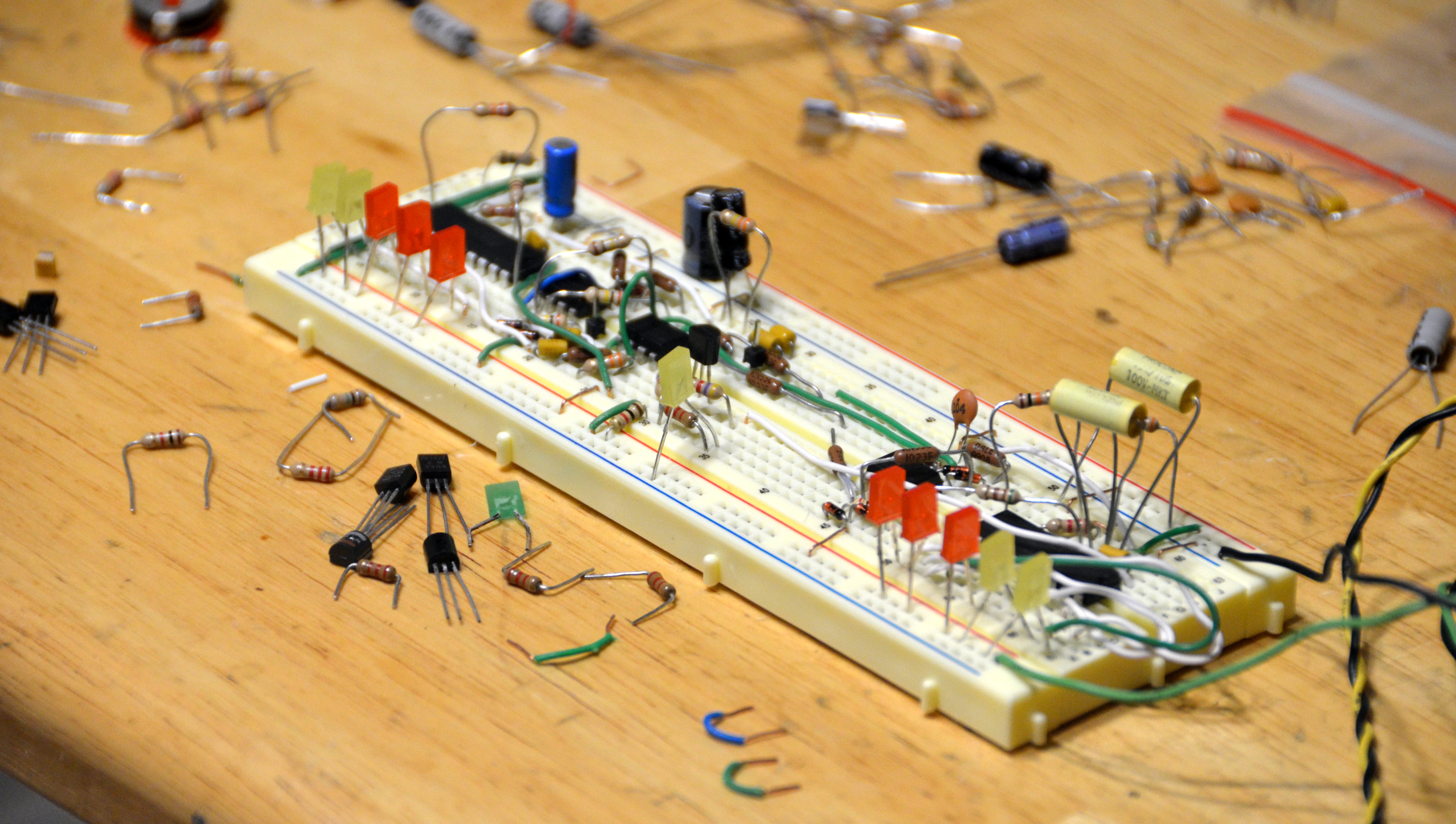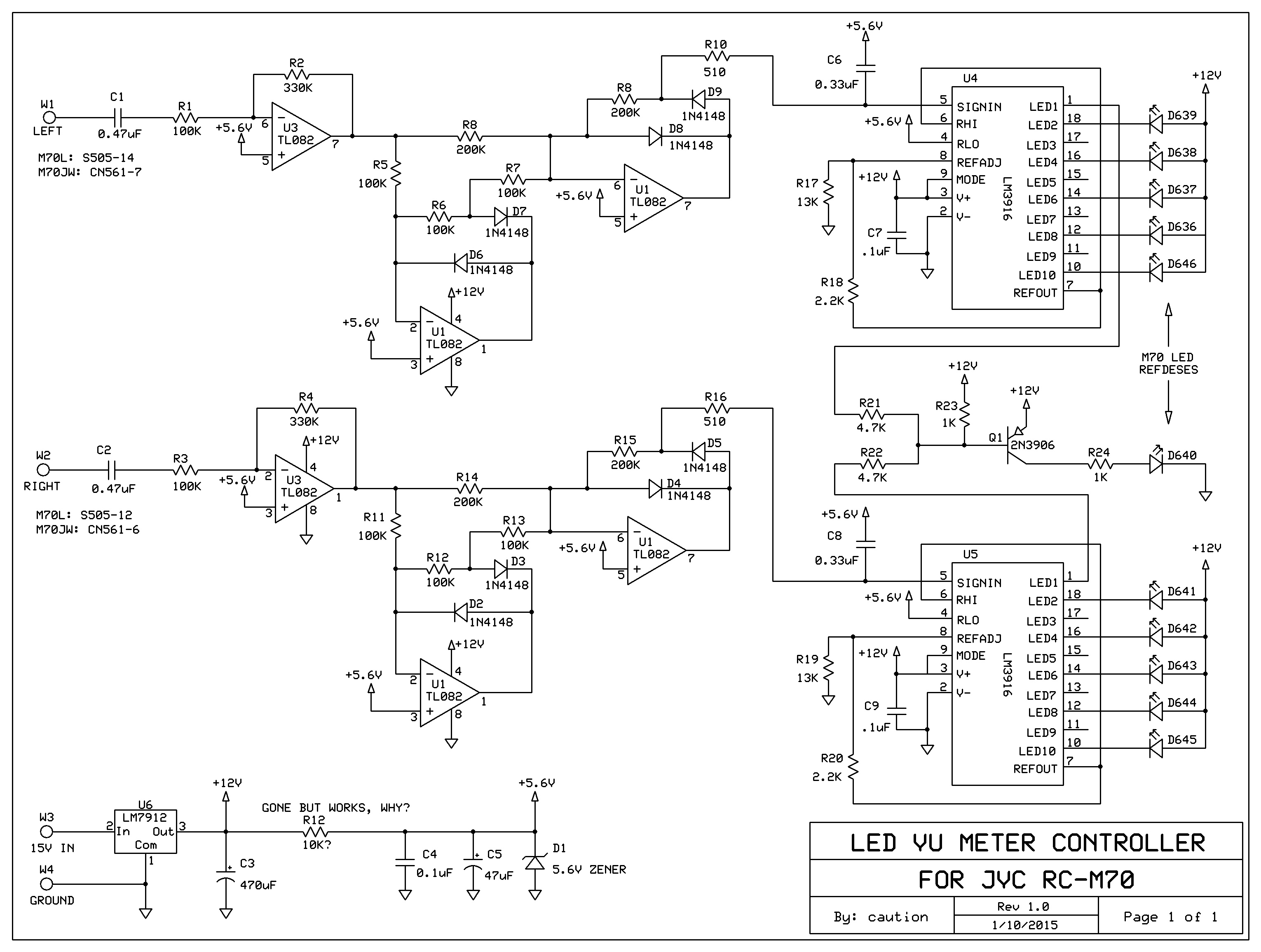Thanks! Turning out better than I planned 
After a bit of adjusting, it looks like the VU boards will barely clear the big black tuning wheel. I still need to solder the other end of the wires to the LEDs. A few things I'm still unsure about though.
1. I need to combine the output of LED #1 from both chips for the center LED. I'm thinking of just shorting them together at the LED, but maybe it will get a little brighter when both outputs drive it, which may not matter enough to run them through an OR gate like this one.
2. I want the VUs to display the line level signal (the needles already vary by volume) but I have an M70L, which has an additional amp circuit for line out before it goes to the DIN jack. I'm assuming that this DIN amp output would be safer and more robust to use than doing what the JW models use, which seems to tie right off the line amp output with a 10K resistor for its line out jack.
3. I still need to figure out what value capacitors to hang off the input and output of the 9V regulator. I'm tapping straight off 15V and may have to run a few inches, I'm guessing that may matter in which values I choose.
Another 3-day work week, so I should have time to get this sorted soon!

After a bit of adjusting, it looks like the VU boards will barely clear the big black tuning wheel. I still need to solder the other end of the wires to the LEDs. A few things I'm still unsure about though.
1. I need to combine the output of LED #1 from both chips for the center LED. I'm thinking of just shorting them together at the LED, but maybe it will get a little brighter when both outputs drive it, which may not matter enough to run them through an OR gate like this one.
2. I want the VUs to display the line level signal (the needles already vary by volume) but I have an M70L, which has an additional amp circuit for line out before it goes to the DIN jack. I'm assuming that this DIN amp output would be safer and more robust to use than doing what the JW models use, which seems to tie right off the line amp output with a 10K resistor for its line out jack.
3. I still need to figure out what value capacitors to hang off the input and output of the 9V regulator. I'm tapping straight off 15V and may have to run a few inches, I'm guessing that may matter in which values I choose.
Another 3-day work week, so I should have time to get this sorted soon!









 I was surprised to see that when I opened up the unit and took out the radio dials.
I was surprised to see that when I opened up the unit and took out the radio dials.